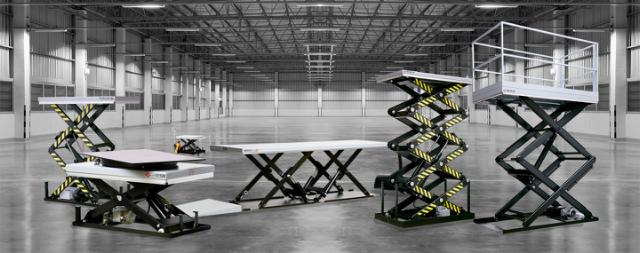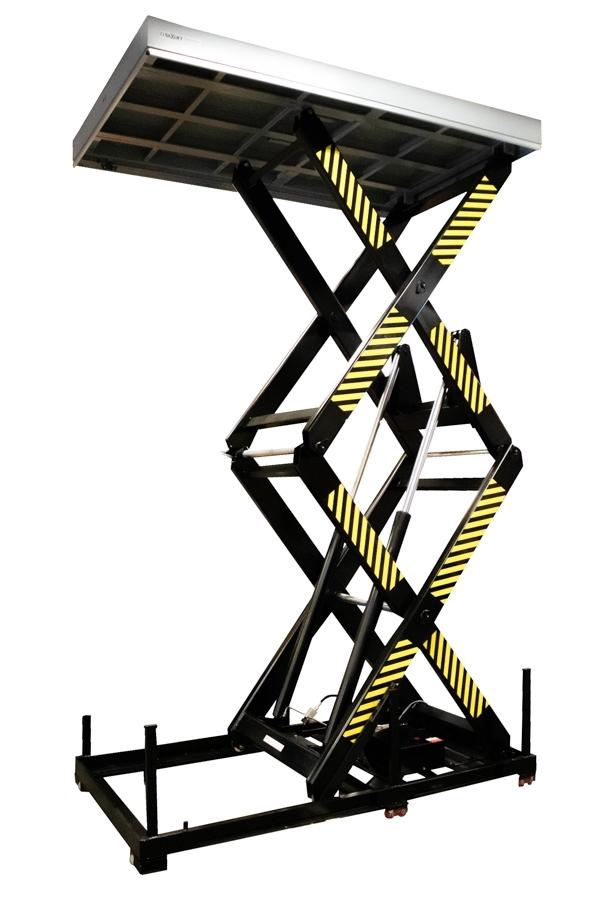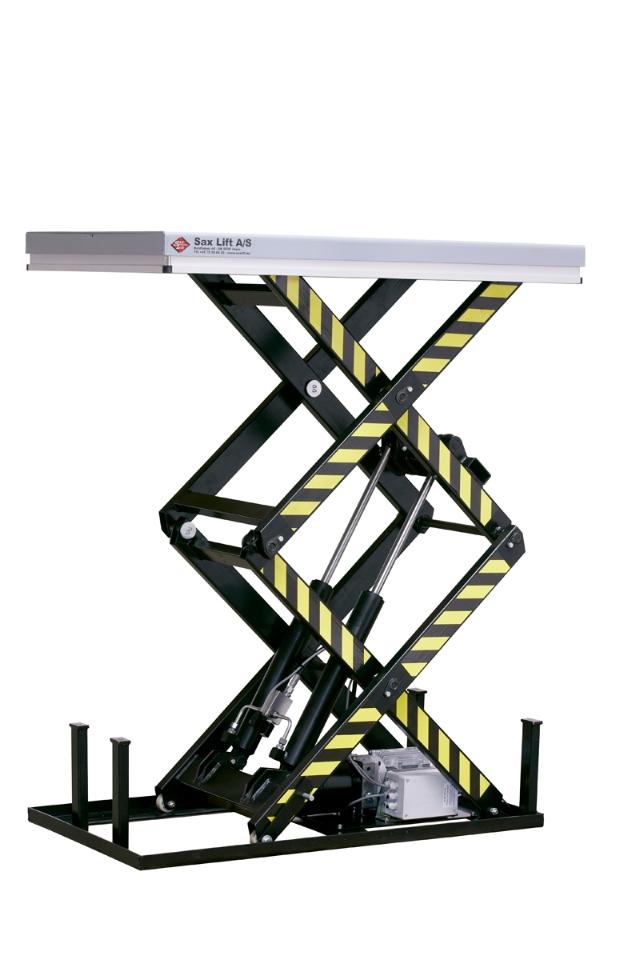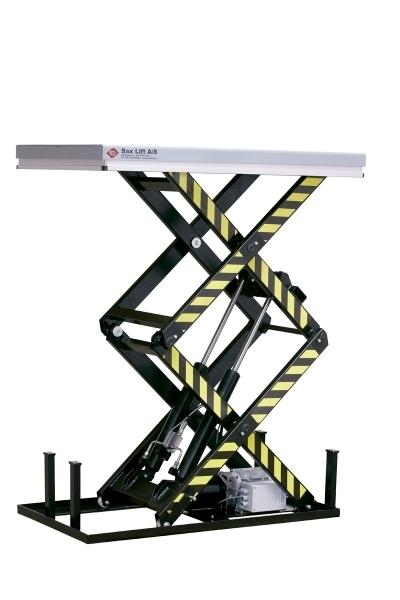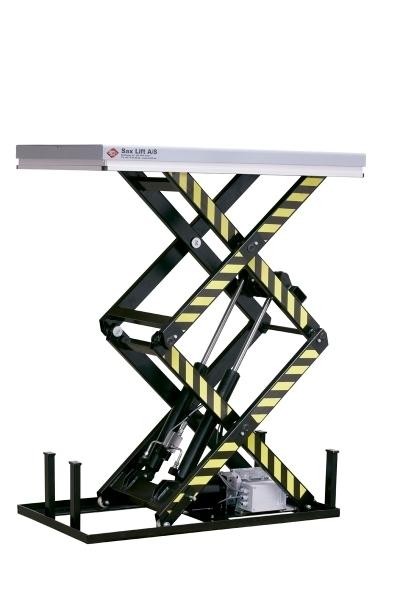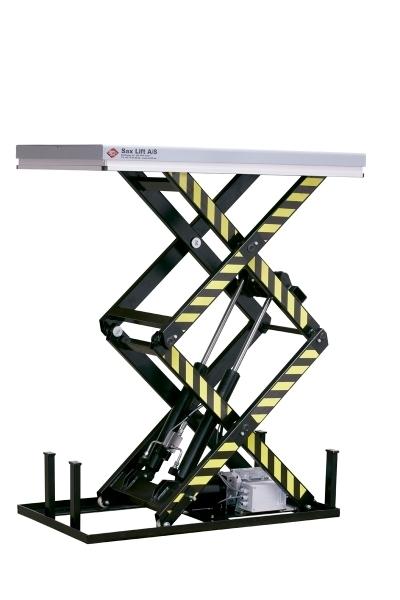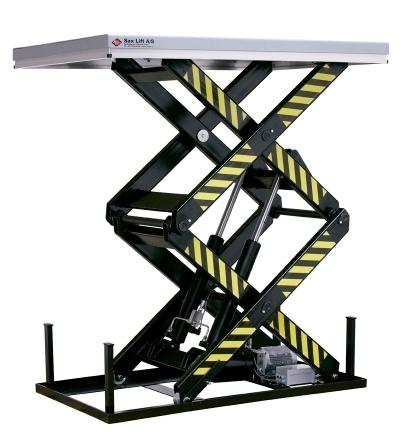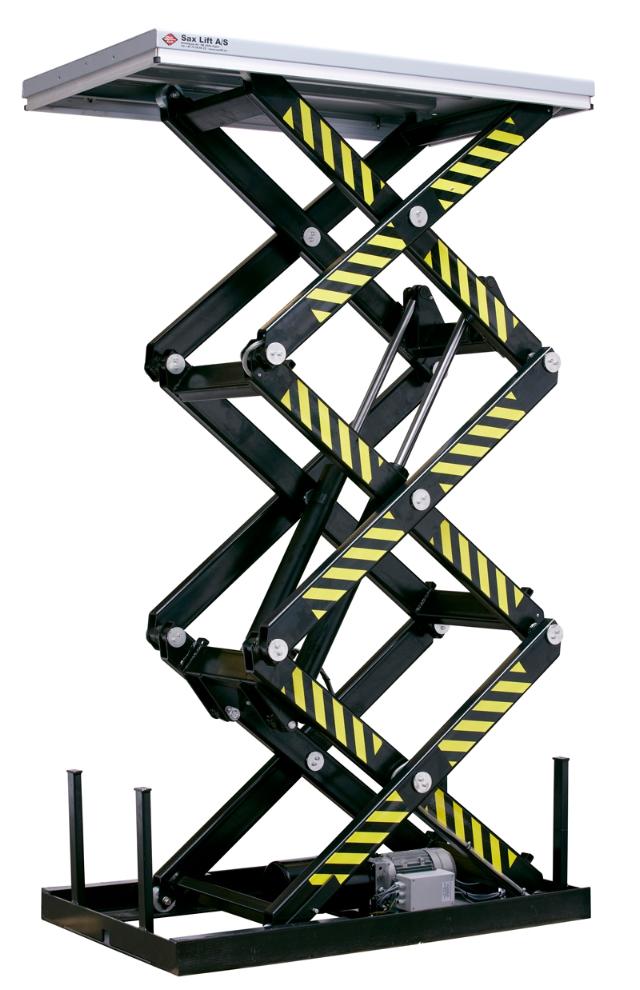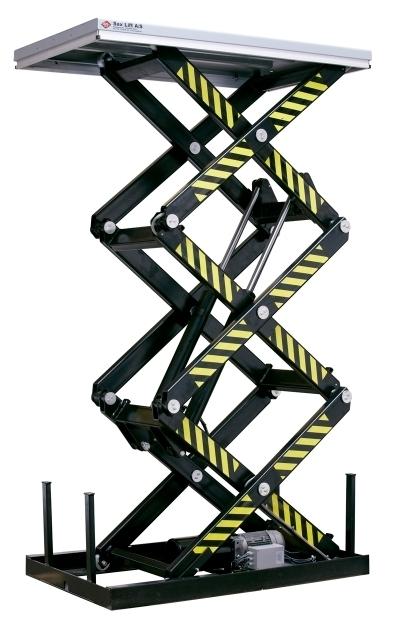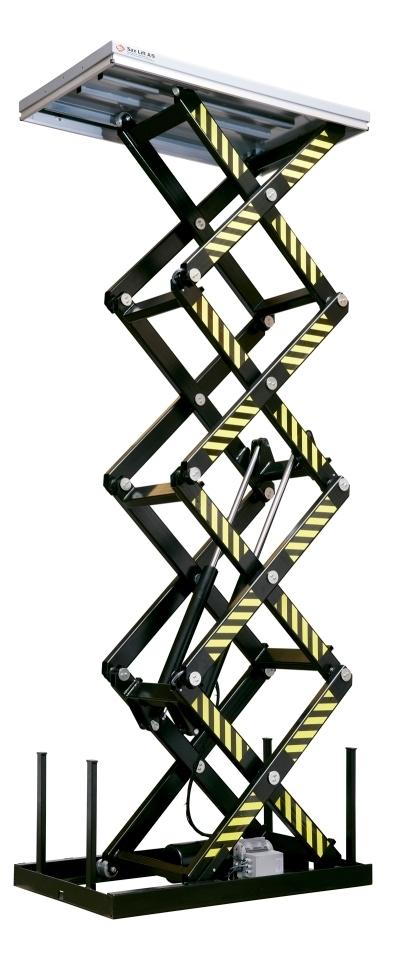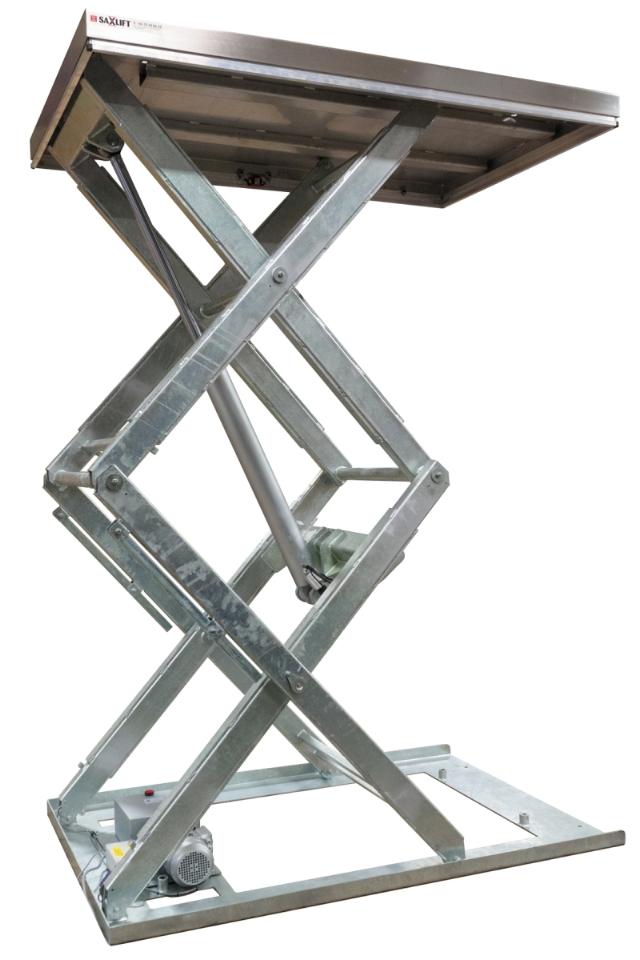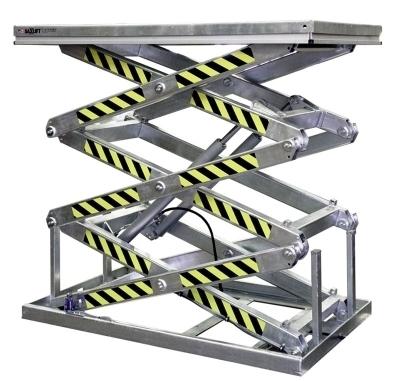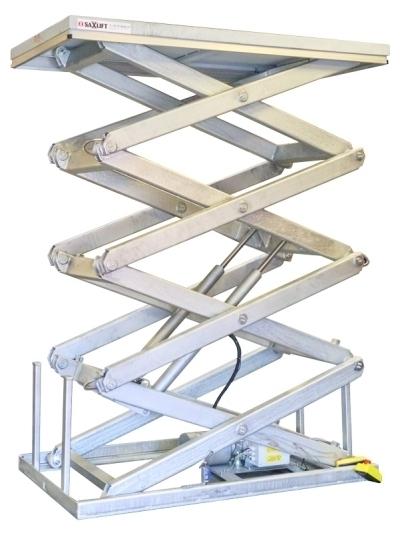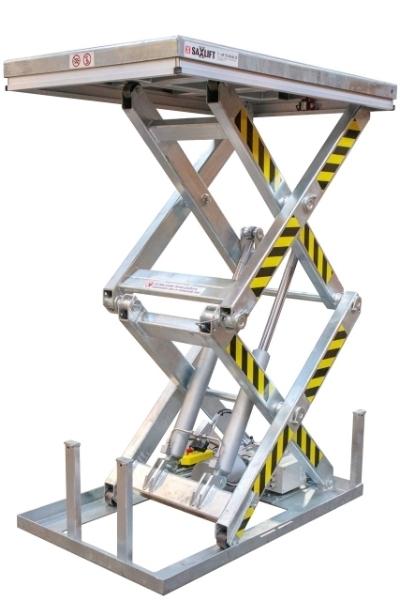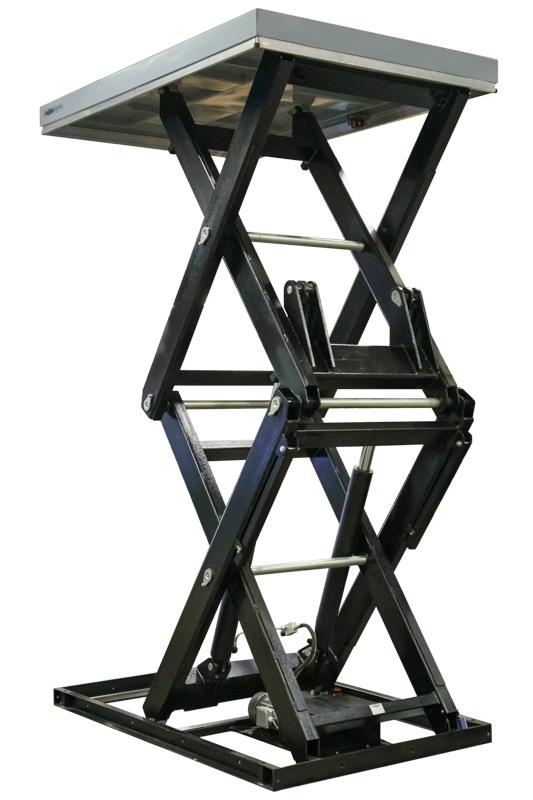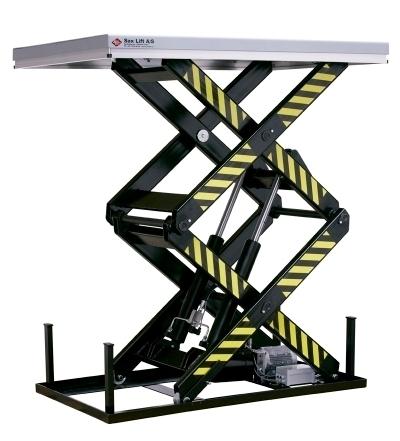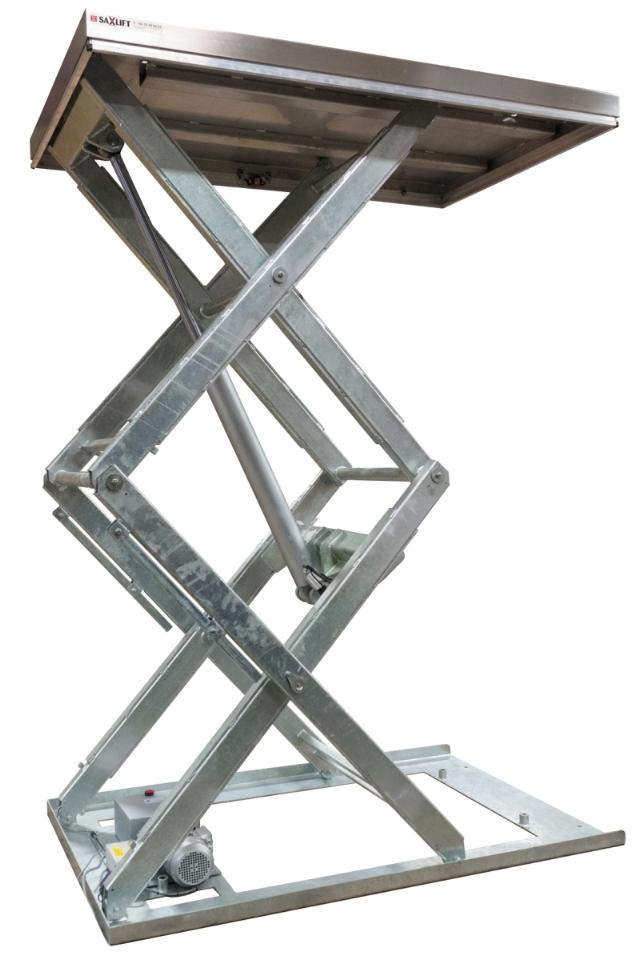Vertical scissor lift tables
Vertical Scissor Lift Table: Vertical Lift Solutions for Every Need
A vertical scissor lift table is an indispensable tool for industries needing to raise and lower heavy loads efficiently and safely. This equipment's design facilitates the handling of materials in manufacturing, warehousing, and distribution environments. Utilizing a hydraulic lift table mechanism offers smooth, reliable lifting capabilities that reduce the risk of injury and improve workflow efficiency.
The vertical scissor lift table is engineered to provide stability while accommodating various load sizes and weights. Its compact structure guarantees it fits into tight spaces without compromising on strength or functionality.
These tables are particularly useful in tasks requiring precision and repeatability, allowing for consistent height adjustments. Overall, they enhance productivity, streamline operations, and guarantee safe handling procedures in demanding industrial settings.
What is a Vertical Scissor Lift Table?
A vertical scissor lift table is an essential tool designed to raise and lower heavy loads with ease, primarily through a hydraulic mechanism.
It includes key components such as a platform, scissor legs, and a hydraulic system that work together to provide stability and smooth operation.
These tables are widely used across various industries, including manufacturing, warehousing, and automotive, to enhance productivity and safety.
How Does a Hydraulic Lift Table Work?
When exploring the mechanics behind a hydraulic lift table, understanding the basic principles of hydraulics is key.
Hydraulic lift tables rely on the power of fluid pressure to elevate heavy loads with ease. The heart of this system is a hydraulic pump, which pushes fluid into a cylinder, creating pressure that extends the scissor mechanism.
This mechanism, resembling crossed arms, expands and contracts to raise or lower the table surface. As fluid enters the cylinder, the scissor mechanism extends, lifting the platform. Conversely, releasing the fluid allows the scissor arms to retract, smoothly lowering the load.
This efficient, controlled movement makes hydraulic lift tables indispensable in environments demanding precision and strength, from industrial settings to warehouses and beyond.
What Are the Key Components of a Scissor Table?
Understanding the key components of a scissor table is essential for grasping its functionality and versatility. A scissor lift table primarily consists of a platform and a scissor mechanism, which is the backbone of its lifting action.
The scissor mechanism comprises crossed supports that open and close like the blades of a pair of scissors, providing vertical motion. Hydraulic cylinders play an important role in powering this movement, as they push or pull the scissor arms, allowing the table to elevate or lower smoothly.
Additionally, the base frame provides stability, ensuring safe and efficient operation. By integrating these components, a scissor lift table can effectively handle various lifting tasks, offering a practical solution for diverse environments requiring vertical lift capabilities.
What Industries Use Vertical Scissor Lifts?
How do various industries benefit from vertical scissor lifts? Vertical scissor lift tables are essential tools across multiple sectors, offering enhanced efficiency and safety.
These lifts are particularly valuable in industries where lifting heavy loads and adjusting work heights is vital. Here's how some industries make use of these versatile tools:
-
Manufacturing: Streamlines assembly lines and material handling.
-
Warehousing: Facilitates easy access to inventory at different heights.
-
Automotive: Provides ergonomic solutions for vehicle repairs and inspections.
-
Construction: Assists in tasks where height variability is important.
-
Retail: Enhances stock management and display adjustments.
Each industry maximizes productivity by integrating vertical scissor lift tables into their operations, ensuring tasks are completed safely and efficiently.
These lifts are indispensable assets in environments that demand flexibility and reliability.
What Are the Benefits of Using a Hydraulic Scissor Lift?
Hydraulic scissor lifts offer significant advantages, including enhanced efficiency in material handling and impressive load capacities.
These lifts streamline operations by facilitating quicker and safer transport of heavy items, which boosts productivity.
Additionally, their design contributes to a safer workplace by reducing the risk of injuries associated with manual lifting tasks.
How Does a Hydraulic Lift Improve Efficiency?
While many industries seek ways to enhance productivity, a hydraulic lift stands out as an essential tool for improving efficiency. By incorporating hydraulic technology, these lifts offer seamless operation, reducing time and effort in material handling tasks.
They streamline workflows and enhance productivity through:
- Reduced Physical Strain: Minimizes manual lifting, lowering injury risks.
- Time Savings: Speeds up loading and unloading processes.
- Increased Precision: Offers controlled movements for delicate tasks.
- Versatility: Adapts to different environments and tasks effortlessly.
- Space Utilization: Optimizes vertical space, freeing up floor area.
Incorporating a hydraulic lift within a workplace not only boosts efficiency but also fosters a safer and more ergonomic environment.
These lifts are vital for businesses aiming to maximize output and maintain a competitive edge.
What is the Load Capacity of Scissor Lifts?
Understanding the efficiency benefits of hydraulic lifts naturally leads to questions about their capabilities, such as the load capacity of scissor lifts.
Scissor lifts are engineered to handle a variety of weights, making them indispensable in settings requiring heavy lifting. Typically, the load capacity of these lifts can range from 500 pounds to several thousand pounds, depending on the model and specifications.
Manufacturers design them with safety margins, ensuring they can safely support their maximum rated loads. It's essential for operators to be aware of these limits to maintain operational efficiency and safety.
How Do Scissor Tables Enhance Workplace Safety?
When it comes to enhancing workplace safety, scissor tables play an essential role by providing a stable surface for lifting and lowering heavy loads. They minimize the risk of injuries that can occur from manual lifting, making them invaluable in various settings.
By integrating scissor tables into the workplace, employers can considerably reduce the strain on their workforce and boost overall safety standards.
-
Prevents overexertion: Reduces the need for employees to lift heavy items manually.
-
Minimizes accidents: A stable platform decreases the likelihood of loads tipping over.
-
Ergonomic benefits: Adjusts to ideal working heights, reducing bending and reaching.
-
Versatile use: Suitable for various tasks, enhancing safety across multiple applications.
-
Reduces downtime: Fewer injuries mean less time lost to recovery and medical leave.
Incorporating a scissor table is a smart safety investment.
What Types of Scissor Lift Tables Are Available?
When exploring the types of scissor lift tables, it's crucial to understand the differences between static and mobile versions.
Double vertical scissor lift tables offer unique advantages that cater to specific lifting needs.
Additionally, knowing when to utilize a vertical scissor lift can greatly enhance operational efficiency.
What is the Difference Between Static and Mobile Scissor Lifts?
How do static and mobile scissor lifts differ in their applications and functionalities?
Static scissor tables are designed for fixed positions, ideal for tasks requiring stability and repeated use at a single location. They're frequently used in assembly lines or warehouses where consistent lifting is needed.
Mobile scissor lifts, on the other hand, offer flexibility and manoeuvrability, making them suitable for tasks that require movement across various locations.
Key differences include:
- Mobility: Static tables are stationary; mobile scissor lifts can be wheeled around.
- Application: Static models suit repetitive tasks; mobile ones are for diverse settings.
- Setup: Static lifts require installation; mobile lifts don't.
- Portability: Mobile scissor lifts are easily transported.
- Cost: Static tables might be less expensive due to fewer components.
What Are Double Vertical Scissor Lift Tables?
Double vertical scissor lift tables are specialized lifting devices that feature two sets of scissor mechanisms stacked vertically to offer greater lifting heights without compromising stability.
These tables are ideal for applications requiring extra elevation, as the double scissor configuration allows for an extended lifting range.
This setup is particularly useful in industrial environments where heavy materials need to be moved between different floors or levels efficiently.
What is a Vertical Scissor Lift and When to Use It?
A vertical scissor lift, although simple in design, is a versatile piece of equipment used to elevate heavy loads efficiently.
These lifts are especially beneficial in various industrial settings, offering reliable solutions for tasks that require precision and height. Vertical scissor lift tables can be powered by hydraulic systems, providing smooth and powerful lifting capabilities. They're ideal for environments where moving and positioning heavy materials is essential.
Here are some applications where vertical hydraulic scissor lift tables excel:
- Warehousing: Streamlines loading and unloading processes.
- Manufacturing: Assists in assembly line tasks requiring different elevations.
- Retail: Facilitates easy stocking of high shelves.
- Automotive: Provides access to elevated vehicle parts.
- Construction: Aids in material handling at various site levels.
This equipment enhances productivity and guarantees safety across diverse industries.
How to Choose the Right Hydraulic Lift for Your Needs?
Selecting the right hydraulic lift involves considering several key factors to guarantee it meets specific operational needs, such as the lift's height and load capacity.
Understanding the importance of these elements helps in choosing a lift that offers both safety and efficiency for various applications.
What Factors Should You Consider When Selecting a Vertical Scissor Lift Table?
When choosing a vertical scissor lift table, what are the key considerations that can guarantee the right fit for specific needs?
One significant factor is the capacity of the scissor lift. Ensuring the lift can handle the desired load is essential for safety and efficiency.
Additionally, several other elements play a role in making the best choice:
-
Purpose: Determine if the lift will be used for heavy-duty industrial tasks or lighter applications.
-
Platform Size: The surface area must accommodate the items being lifted.
-
Mobility: Consider whether a stationary or portable model is preferable.
-
Power Source: Decide between electric, manual, or hydraulic options.
-
Durability: Assess the material quality and construction for longevity.
What is the Importance of Height and Capacity in a Hydraulic Lift?
Height and capacity are vital aspects when evaluating a hydraulic lift's suitability for specific tasks.
The height of a lift determines how high it can elevate materials or personnel, guaranteeing tasks are completed efficiently at elevated levels. Without adequate height, operations could be hindered, affecting productivity and safety.
Meanwhile, capacity refers to the maximum weight a lift can bear. Exceeding this limit might cause equipment failure or accidents, making it imperative to select a lift that meets or exceeds the weight requirements of a given task.

